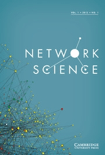
Network Science
Scope & Guideline
Innovating the study of networks across disciplines.
Introduction
Aims and Scopes
- Complex Network Analysis:
The journal emphasizes methodologies for analyzing complex networks, including statistical modeling, network metrics, and structural properties to uncover insights about various social, biological, and technological systems. - Interdisciplinary Applications:
Research published in this journal spans multiple disciplines—such as sociology, biology, computer science, and economics—demonstrating how network analysis can be applied to real-world problems across different fields. - Dynamic and Temporal Networks:
A significant focus is on dynamic networks, exploring how structures and interactions evolve over time, including studies on temporal patterns, community evolution, and the implications of such dynamics. - Epidemiological Modeling:
The journal often features research that applies network science to epidemiology, modeling the spread of diseases through networks, which has gained prominence particularly in the context of global health crises. - Algorithm Development:
There is a consistent emphasis on the development of new algorithms for network analysis, including community detection, link prediction, and network visualization techniques. - Social Media and Online Behavior:
Explorations of social networks, particularly in the context of social media, are a core area, analyzing how information spreads, user interactions, and community structures influence behavior online.
Trending and Emerging
- Machine Learning and AI in Network Analysis:
There is a growing trend towards integrating machine learning and artificial intelligence techniques into network analysis, enhancing predictive capabilities and enabling more complex modeling of network dynamics. - Health and Epidemiology Networks:
Research focusing on health networks, particularly in the context of infectious diseases and public health responses, has surged, reflecting the ongoing global health challenges and the importance of understanding disease spread through networks. - Multiplex and Multilayer Networks:
An increasing interest in multiplex and multilayer network analysis is evident, exploring how different types of relationships and interactions coexist within a single framework, providing richer insights into complex systems. - Ethical and Social Implications of Networks:
Emerging themes include the ethical implications of network dynamics, particularly in relation to social media, misinformation, and privacy concerns, indicating a shift towards examining the societal impacts of network structures. - Network Dynamics and Resilience:
Research is increasingly focusing on the dynamics of network resilience, particularly in the face of disruptions such as pandemics or natural disasters, assessing how networks can adapt and maintain functionality under stress.
Declining or Waning
- Traditional Social Network Analysis:
Although foundational, the basic methods of social network analysis are becoming less prominent as more sophisticated techniques and models emerge, leading to a decline in publications focusing solely on traditional metrics without innovative approaches. - Static Network Models:
There has been a noticeable decline in studies centered around static network models, as researchers increasingly focus on dynamic, time-evolving networks that better represent real-world phenomena. - Overly Generalized Models:
Research that employs overly simplistic or generalized network models without empirical validation has seen a decrease, as the community shifts towards more nuanced and context-specific analyses. - Single-Domain Studies:
There is a waning interest in studies that focus solely on a single domain (e.g., only biological networks) without interdisciplinary approaches, as the trend moves towards integrating insights across multiple domains. - Descriptive Studies without Novel Insights:
Publications that provide purely descriptive analyses of network structures without offering new insights, theoretical contributions, or methodological advancements are becoming less frequent.
Similar Journals

ACTA INFORMATICA
Navigating Trends in Information Technology.ACTA INFORMATICA is a prestigious academic journal published by Springer, dedicated to advancing the fields of computer networks and communications, information systems, and software engineering. With an ISSN of 0001-5903 and an E-ISSN of 1432-0525, the journal has continued to thrive since its inception in 1971 and is set to cover research up until 2024. Although it currently operates within a Q3 category in its respective fields, it is recognized for providing a platform for high-quality, peer-reviewed research, which is essential for fostering innovation and knowledge dissemination in computer science. While it does not offer an open access option, scholars benefit from its rigorous editorial standards and comprehensive coverage of significant trends and methodologies. The journal is conveniently based in New York, NY, USA, further enhancing its accessibility to a global audience. Researchers, professionals, and students alike will find ACTA INFORMATICA a valuable resource for staying abreast of the latest developments and breakthroughs in this vital area of study.
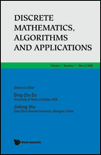
Discrete Mathematics Algorithms and Applications
Advancing the Frontiers of Discrete Mathematics.Discrete Mathematics Algorithms and Applications, published by World Scientific Publishing Co Pte Ltd, stands as a pivotal resource in the field of discrete mathematics and combinatorics since its inception in 2009, with a convergence period extending to 2024. The journal holds an esteemed position within its category, ranked in the Q3 quartile according to latest metrics, recognized for its qualitative contributions to the academic community. With an ISSN of 1793-8309 and an E-ISSN of 1793-8317, it serves as a vital conduit for disseminating innovative research focused on algorithms and their applications within discrete mathematics. Although currently not an open access journal, it provides access to valuable insights and findings that are crucial for researchers, professionals, and students seeking to advance their understanding and application of discrete mathematical concepts. Based in Singapore, the journal continues to promote rigorous scholarly discourse and is a key publication for those involved in advancing the discipline.
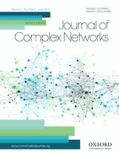
Journal of Complex Networks
Unraveling the Complexity of Mathematical InteractionsJournal of Complex Networks, published by Oxford University Press, stands as a prominent platform in the fields of Applied Mathematics, Computational Mathematics, and Computer Networks and Communications. Since its inception in 2013, this esteemed journal has garnered a strong reputation, achieving a Q2 category ranking across multiple disciplines in 2023, indicating its influence and quality in the relevant academic circles. With an ISSN of 2051-1310 and E-ISSN 2051-1329, it aims to facilitate the understanding of intricate network systems and their applications, positioning itself at the forefront of cutting-edge research. While the journal currently does not offer Open Access options, it remains a vital resource for researchers, professionals, and students seeking insights into the dynamic interplay between networks and computational methodologies. Its commitment to promoting rigorous research is reflected in its impressive Scopus rankings, which highlight its intersectional impact on various mathematical and computational disciplines. Contributing to this journal provides authors with an opportunity to engage with a broad audience dedicated to advancing knowledge in complex networks, optimization, and management science.

Ad Hoc & Sensor Wireless Networks
Driving excellence in the realm of wireless networks.Ad Hoc & Sensor Wireless Networks, an esteemed journal published by OLD CITY PUBLISHING INC, provides a dedicated platform for the dissemination of pioneering research in the realms of computer science, electrical and electronic engineering, and instrumentation. With an ISSN of 1551-9899 and an E-ISSN of 1552-0633, this journal has established itself as a crucial resource for scholars and practitioners alike, actively contributing to the advancements in ad hoc networks and wireless sensor technologies. It holds a commendable position within the third quartile in its respective fields, with Scopus rankings reflecting its relevance in the academic community. As a publicly accessible source of valuable insights, the journal aims to inspire innovation and facilitate progress across various disciplines. Situated in Philadelphia, PA, and converging its efforts from 2005 to 2024, Ad Hoc & Sensor Wireless Networks continues to be a beacon of research excellence, impacting both theoretical and practical domains in technology.
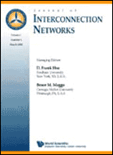
JOURNAL OF INTERCONNECTION NETWORKS
Advancing Knowledge in Network InterconnectionsJOURNAL OF INTERCONNECTION NETWORKS, published by World Scientific Publishing Co Pte Ltd, serves as a vital platform for researchers and professionals in the field of computer networks and communications. Established to foster an understanding of interconnection networks, this journal showcases innovative research findings, methodologies, and advancements in the domain. With an ISSN of 0219-2659 and an E-ISSN of 1793-6713, it has navigated through critical periods of publication, capturing the evolution of the field from 2008 to 2013 and from 2015 to 2023, albeit with discontinued coverage in Scopus. Although currently listed in the Q4 category for Computer Networks and Communications, the journal provides unique insights that contribute significantly to the growing body of knowledge in this niche area, appealing to academics, industry practitioners, and students alike. Please note that the journal operates under traditional subscription-based access options. Engaging with the JOURNAL OF INTERCONNECTION NETWORKS will undoubtedly enhance your understanding and stimulate further exploration within the increasingly important landscape of computer networking.

Internet Technology Letters
Connecting Academia and Industry Through Cutting-edge Research.Internet Technology Letters, published by John Wiley & Sons Ltd, is a dynamic and rapidly evolving journal that focuses on the innovative applications and developments within the realms of Artificial Intelligence, Computer Networks and Communications, Information Systems, and Software. With its E-ISSN 2476-1508 and a defined convergence period from 2018 to 2024, this journal seeks to address emerging trends and critical challenges confronting the digital landscape today. Recognized in the Q3 quartile range across multiple computer science categories in 2023, it serves as a valuable resource for researchers, professionals, and students seeking to advance their knowledge and stay updated on significant technological advancements. While currently not an open-access journal, Internet Technology Letters holds a prominent position on platforms like Scopus, ranked within the middle percentiles, reflecting its contribution to the academic community. The journal aims to foster connectivity between academia and industry, encouraging submissions that promote interdisciplinary collaboration and innovation. By creating a platform for sharing groundbreaking research, Internet Technology Letters plays a crucial role in shaping future technological landscapes.
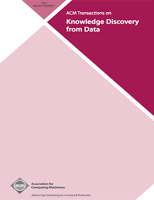
ACM Transactions on Knowledge Discovery from Data
Advancing the Frontiers of Data DiscoveryACM Transactions on Knowledge Discovery from Data (TKDD), published by the Association for Computing Machinery, is a prestigious journal at the forefront of the interdisciplinary realm of data mining and knowledge discovery. With an impressive Q1 ranking in Computer Science and a Scopus rank of #43 out of 232, this journal stands out as a top-tier resource for innovative research that addresses complex challenges in data science. Covering impactful studies from 2007 to 2024, TKDD presents cutting-edge algorithms, methodologies, and applications that shape the future of knowledge extraction from vast datasets. While not an open-access journal, it provides a platform for researchers, professionals, and students to disseminate their findings and engage with the latest advancements in this rapidly evolving field. By fostering collaboration and knowledge sharing, TKDD plays a vital role in advancing the understanding and application of data analysis techniques, making it an essential read for anyone involved in the pursuit of knowledge from data.

Journal of Applied Mathematics & Informatics
Transforming Ideas into Algorithms: Where Mathematics Meets Informatics.Journal of Applied Mathematics & Informatics is a peer-reviewed academic journal published by the Korean Society of Computational & Applied Mathematics (KSCAM), focusing on the integration and application of mathematical theories and computational techniques across various domains. Established in 2019, this journal serves as a platform for researchers, professionals, and students to share innovative methodologies, practical applications, and theoretical advancements in fields like analysis, applied mathematics, and computational theory. As a Q4 ranked journal according to the 2023 category quartiles in analysis, applied mathematics, computational mathematics, and miscellaneous mathematics, it provides a valuable, albeit niche, contribution to the academic landscape. While the journal currently operates without open access options, it aims to disseminate quality research to foster collaboration and knowledge exchange within the mathematics and computer science communities. Researchers looking to explore emerging trends and methodologies in applied mathematics and informatics will find an essential resource in this journal, which is based in Daejeon, South Korea.
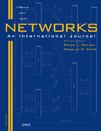
NETWORKS
Illuminating the Pathways of Information SystemsNETWORKS, an esteemed journal published by Wiley, serves as a premier platform for the dissemination of high-quality research in the fields of computer networks, communications, hardware architecture, and information systems. With an ISSN of 0028-3045 and an E-ISSN of 1097-0037, the journal has been at the forefront of networking studies since its inception in 1971 and continues to thrive, boasting a convergence period that extends into 2024. Recognized for its rigorous peer-review process, NETWORKS is placed in the Q1 and Q2 quartiles of various categories, underscoring its significant impact and relevance in the realm of computer science. Although there is no open access option currently available, the journal remains a vital resource for researchers, professionals, and students who seek to navigate the evolving landscapes of technology and innovation. With its robust Scopus rankings and a growing readership, NETWORKS is dedicated to fostering advancements in network theory and practice, making it an essential read for those at the cutting edge of this dynamic field.

Complex Systems
Innovating Understanding Across Diverse DomainsComplex Systems is a pivotal journal published by Complex Systems Publications Inc, specializing in the interdisciplinary field of complex systems science. With an ISSN of 0891-2513, it focuses on advancing the understanding of complex phenomena across various domains, including computer science and control engineering. Operating from the United States, this journal has established itself as a credible source with a current impact factor reflecting its relevance—ranking in the Q3 category for both Computer Science (miscellaneous) and Control and Systems Engineering as of 2023. Although it does not offer Open Access, Complex Systems aims to facilitate the exchange of cutting-edge research and innovative methodologies, making it indispensable for researchers, professionals, and students eager to explore and contribute to the field. With coverage spanning from 2012 to 2024, it strives to foster a deeper understanding of the principles governing complex systems, thus paving the way for future technological advancements and theoretical developments.